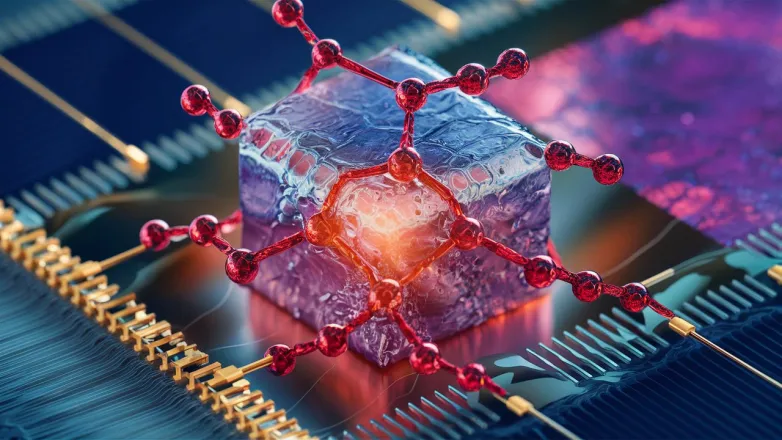Bridging Molecules Boost Efficiency of Perovskite Solar Cells
- Revolutionize solar energy with a groundbreaking bridging molecule, boosting efficiency and stability of perovskite solar cells to new heights.

Researchers have developed a bridging molecule, (2-aminoethyl)phosphonic acid (AEP), to enhance the performance and stability of perovskite solar cells (PSCs). The molecule modifies the SnO2/perovskite buried interface in n–i–p structure PSCs, improving carrier dynamics and charge extraction. The phosphonic acid group bonds strongly to the SnO2 surface, reducing surface carrier traps and leakage current, while the amino group enhances perovskite film growth, resulting in higher crystallinity and fewer defects. This leads to a champion power conversion efficiency (PCE) of 26.40% for PSCs, with improved operational durability of ≈1400 hours.
The interface between the perovskite layer and electron transporting layer is crucial for PSC performance. The heterogeneity of this interface affects carrier dynamics, but the bridging molecule developed by researchers from Tsinghua University, Xiamen University, CAS, and National Center for Nanoscience and Technology addresses this issue. By improving charge extraction and reducing surface traps, the molecule enhances PSC efficiency and stability. The research demonstrates the potential for more efficient and durable perovskite solar cells, with implications for renewable energy technology.
How does (2-aminoethyl)phosphonic acid enhance perovskite solar cell performance and stability?
- The (2-aminoethyl)phosphonic acid (AEP) molecule modifies the SnO2/perovskite buried interface in n–i–p structure PSCs, improving carrier dynamics and charge extraction.
- The phosphonic acid group in AEP bonds strongly to the SnO2 surface, reducing surface carrier traps and leakage current.
- The amino group in AEP enhances perovskite film growth, resulting in higher crystallinity and fewer defects.
- The improved interface between the perovskite layer and electron transporting layer leads to a champion power conversion efficiency (PCE) of 26.40% for PSCs.
- The operational durability of PSCs with AEP is approximately 1400 hours, indicating enhanced stability.
- The research conducted by Tsinghua University, Xiamen University, CAS, and National Center for Nanoscience and Technology demonstrates the potential for more efficient and durable perovskite solar cells, with implications for renewable energy technology.
Also read


